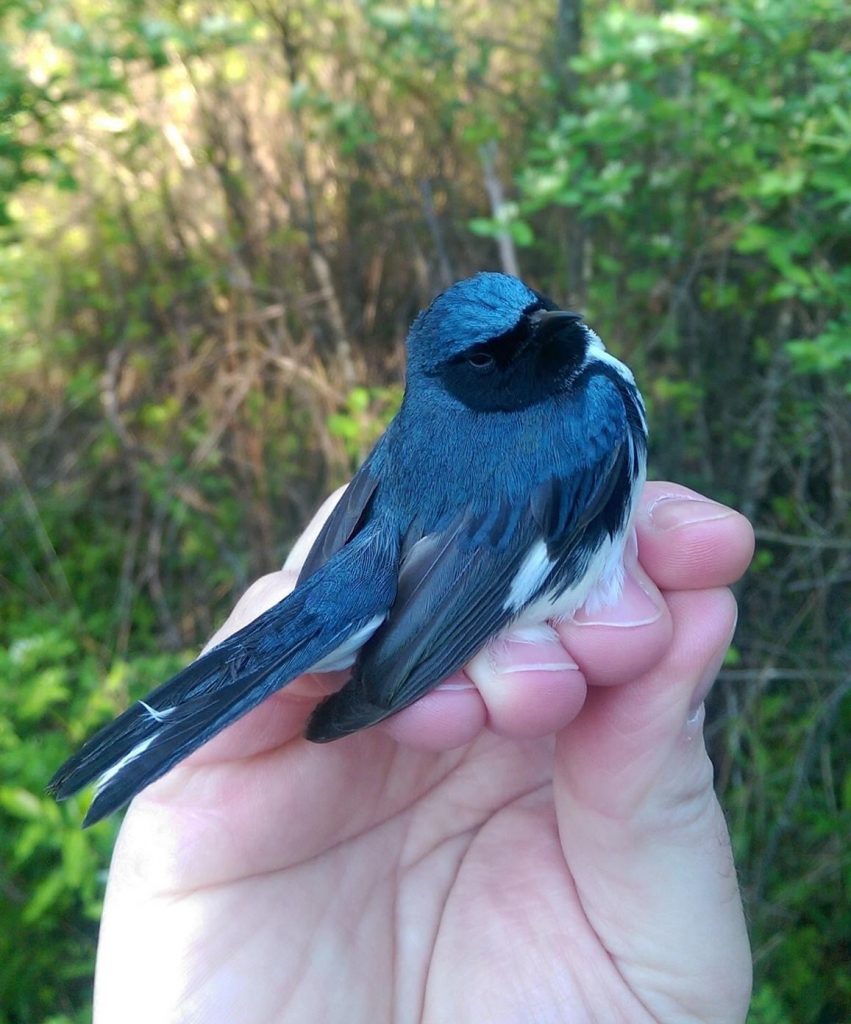To accompany Dr. Rob Smith’s recent summary of his ongoing research (Spotlight on Avian Behavioral Ecologist, Professor Rob Smith), below are listed a few presentations and publications of his research group.

Recent presentations
Hatch, Margret I., and Robert J. Smith. 2021. Seasonal and species differences in feather mite intensity in eight songbirds. Northeast Natural History Conference, a joint meeting with the Wilson Ornithological Society and the Association of Field Ornithologists. Virtual meeting. Presentation by M.I. Hatch.
This was a poster presenting our results examining feather mite infestation in a number of songbird species (Common Yellowthroat, Gray Catbird, Magnolia Warbler, Red-eyed Vireo, Veery, White-throated Sparrow and Black-capped Chickadee) captured at our study site in Lackawanna State Park during both spring and fall migration. We found seasonal and species differences in feather mite prevalence and intensity consistent with other studies. Mite prevalence was higher in spring than fall in all but one of the species examined (Ovenbird). We also found mite infection intensity varied by season and was higher in spring than in fall in all species examined.
Broom County Naturalist Club: Northern Saw-whet Owls – An overview of natural history and ongoing research within Lackawanna State Park. Online (Zoom) presentation on the biology and ecology of Northern Saw-whet Owls (November 11th, 2020).
I discussed the current state of knowledge about the natural history of Northern Saw-whet Owls along with providing an overview of our research on owls in Lackawanna State Park.
Recent publications
Smith, R.J. and M.I. Hatch. 2020. Stopover ecology of fall migrating landbirds at an inland stopover site in northeastern Pennsylvania dominated by nonnative vegetation. The Wilson Journal of Ornithology 32(2):398–409.
This paper, which was published recently (the journal is a few issues behind) explores timing of fall migrating landbirds by age and sex as well as the fitness consequences of using habitats dominated by exotic vegetation (an exotic species is a species that evolved elsewhere and has been introduced, often by humans, into a novel area) within Lackawanna State Park during fall migration. Results suggest little difference in migratory timing by age or sex and that exotic-dominated shrublands do not provide high-quality stopover habitat for most species using this habitat in northeastern Pennsylvania.
Smith, R. J., Hatch, M.I. and M. Carey. 2020. Arrival timing and the influence of weather experienced during the nonbreeding and breeding periods on correlates of reproductive success in female field sparrows (Spizella pusilla) breeding in northeastern Pennsylvania, USA. International Journal of Biometeorology. https://doi.org/10.1007/s00484-020-01905-0.
This paper explores relationships between temperature and precipitation experienced by Field Sparrows during the wintering, spring migratory and breeding periods and correlates of seasonal reproductive performance (when a female initiated her clutch, the number of eggs in her clutch and the average volume of eggs in her clutch). We used temperature and precipitation data acquired by weather stations south of our study area during the wintering and spring migratory periods as well as temperature and precipitation data from the Scranton Wilkes Barre Airport acquired during the breeding season. Our results suggest temperature and/or precipitation encountered when sparrows were south of our site during both the wintering period and the spring migratory periods influenced when a female arrived at our study site to breed as well as when she initiated her first clutch. We also found evidence that temperature experienced on the breeding grounds influenced clutch initiation day. Our results contribute to the growing body of evidence that events experienced prior to the breeding season may influence individuals and population processes in subsequent seasons.
